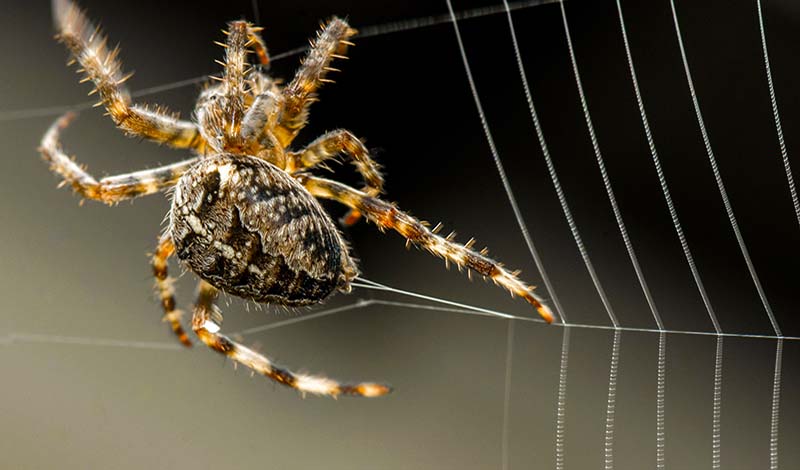2-minute read
We still do not know one-thousandth of one percent of what nature has revealed to us.
Albert Einstein
If you spent 400 million years practicing a skill, chances are you would become pretty good at it. So, it’s not surprising that many of the 44,000 species of spiders on Earth have perfected the craft of silk spinning over the course of a few hundred thousand millennia. Now, scientists are working to unravel how and why one hairy little arachnid in Madagascar has evolved to spin the toughest threads on the planet—silks that outperform fibers produced by both eight-legged and human competition.
Just one-fifth to three-quarters of an inch long, Darwin’s bark spider can spool out silk threads up to 82 feet long and ten times tougher than Kevlar. The industrious orb weavers anchor these exceptionally strong bridge lines across rivers, lakes, and streams from which they suspend massive, super-sticky, ten-by-ten wheel-shaped webs to capture prey.
Researchers studying the spider’s weaving techniques believe the ability to spin such remarkably sturdy and stretchy silk developed as a gene-level adaptation to the animal’s habitat. Constructing giant webs that hang in flyways over water traveled by insects, birds, and bats expanded the bark spider’s menu options. The bigger, stronger, and stickier the web, the greater the catch.
The discovery of this little African webmaster is inspiring material scientists around the world, hoping to replicate fiber with the strength and flexibility of the bark spider’s silk in applications ranging from artificial tendons and ligaments to structural materials for bridges and vehicles.
Even if you’re a card-carrying arachnophobe and can’t imagine cozying up to these multi-legged creepy crawlies, there is no doubt they have much to teach us. That’s why protecting wild places and the creatures that inhabit them is critically important. Beyond contributing to the amazing diversity of life on Earth, newly and yet-to-be-discovered animal species may hold the key to addressing some of our greatest challenges.

ICYMI Nature News
Remember the Earth Angels
It’s been a heartrending couple of weeks for the good people struggling to save the world’s third-largest coral reef in the Florida Keys National Marine Sanctuary. Extremely high ocean temperatures are bleaching and killing off newly transplanted corals before they have a chance to get established. How to lend your support? Here are ten actions you can take to help cool the planet—take a look. Because to quote the IPCC, “Every action matters. Every bit of warming matters. Every year matters. Every choice matters.” Remember the Earth angels.
Bearers of Bad News Birds
For two decades, the seasonal migration patterns of the veery thrush have helped scientists predict the intensity of the Atlantic hurricane season. What do these little fliers know that we don’t know? You can find out here.
Eavesdropping on Dolphins with AI
Scientists are using artificial intelligence to identify the unique clicks and whistles of two endangered species of pink dolphins in the Amazon River. The AI application was designed to help track the movements of the rare animals to aid in conservation. Can you hear us now?
Wild Horse Fire Brigade
Could grazing wild horses hold the key to managing the overgrowth of dried vegetation that provides fuel for wildfires in the Western United States? Read about one man’s mission to find out here.
A Brand-New Batch of Octo-babies
Researchers have discovered a rare deep-sea octopus nursery 10,000 feet down in the Pacific. You can find a video of the octo-moms and their adorable babies here.
Bees Leave No Pollen Behind
To expand their floral menu options, honeybees can turn their tongues into spoons or straws to accommodate the varying shapes and structures of flowers. See how the tiny tongue twisters do it here.




















































